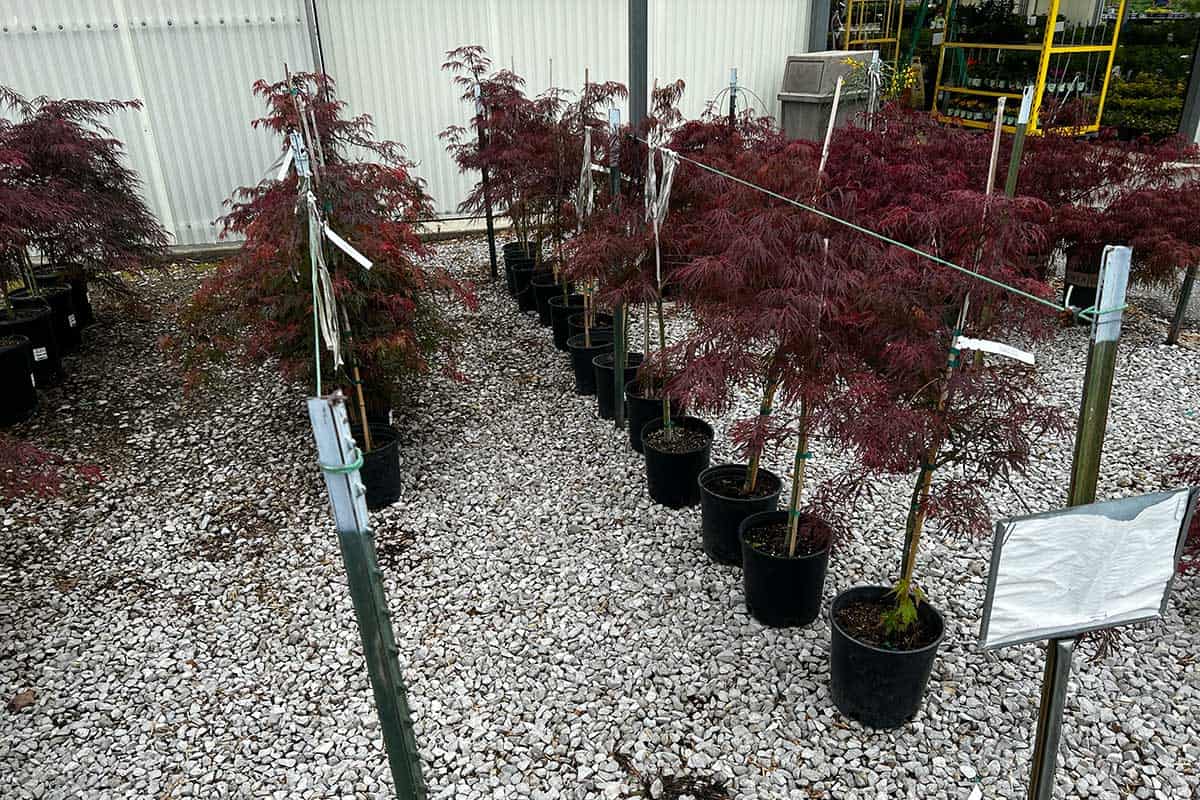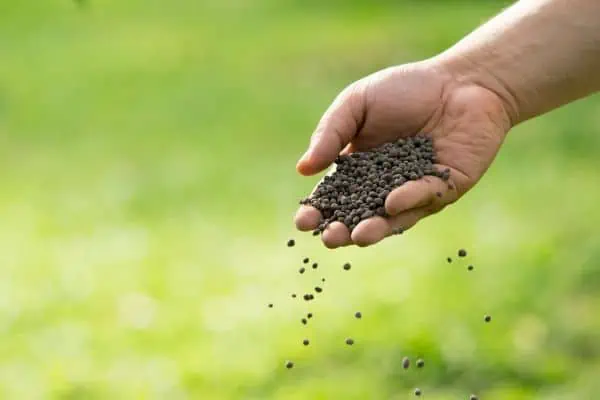The Japanese maple is one of the most well-known ornamental trees on Planet Earth. Originally from the island nation of Japan, they were exported worldwide where they’ve only grown in popularity.
Why are they so well-loved? Many reasons. First, they stay small. You can fit one in a patio or small gardening space. Second, they like shade. They often grow where other trees can’t. Lastly, they have some of the most beautiful autumn leaves of any deciduous tree. Their dark reddish leaves range in color from red to green to maroon.
You’re most likely to grow a Japanese maple in a pot if you’re keeping it as a bonsai. You’re in luck when growing this kind of tree in a pot; Japanese maples adjust well to becoming bonsai plants. They can also thrive in larger pots, such as garden features or doorway ornaments.
In today’s article, we’ll investigate the top 5 reasons behind why a Japanese Maple will not thrive or need recovery treatment.
How to Revive a Potted Japanese Maple Tree
Potted Japanese maple trees can be delicate. They are sensitive to sunlight, overwatering, and pests, not to mention they need extra pruning. Their stunning fall colors and delicate arching branches make up for their high care needs.
1. Remove pests and insects
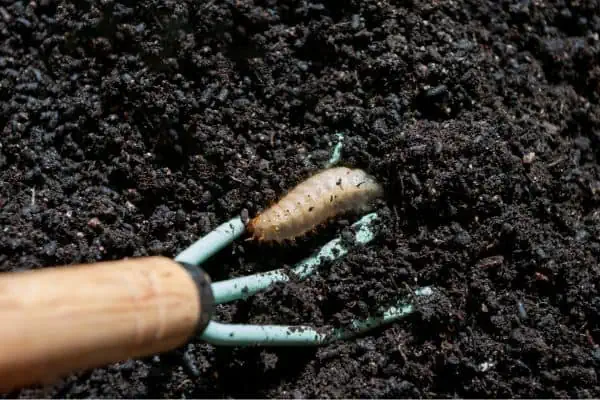
This is one of the easiest ways to check your potted Japanese Maple. It may be slightly tedious if your tree is large or in a pot on the floor. Bonsai owners should have a much easier time because there is less surface area to cover on the plant.
If you do spot insects, one quick way to get rid of them without expensive or dangerous pesticides uses dishwashing soap. Squirt a drop of liquid soap into a spray bottle of water.
Shake, and spray lightly onto the leaves and trunk of the tree. This works for both indoor and outdoor potted Japanese maples.
2. Check the soil moisture level
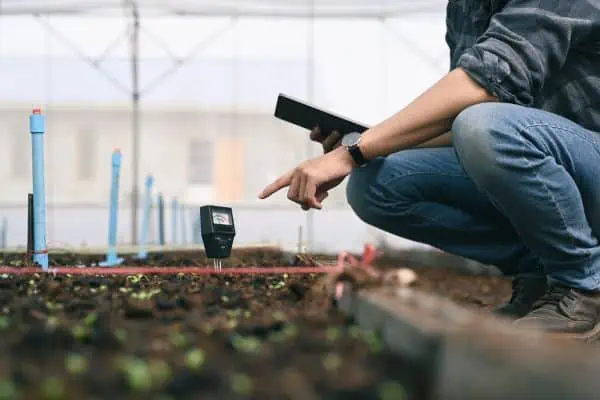
All kinds of potted plants are more vulnerable to overwatering compared to trees planted directly in the ground. Potted plants’ water is stuck within their container, the roots can get waterlogged more easily. There are several ways to solve this problem and keep your potted Japanese maple content.
First, pot the Japanese maple with good drainage in mind. You should first line the base of the pot with a rocky substrate.
It’s imperative that the pot have holes in the bottom for water to drain out of. We recommend using a saucer or stand so that water doesn’t leak out of the pot.
Then, mix topsoil with sand in a 50/50 mixture. This increases drainage in the soil and will reduce the likelihood of you overwatering your maple.
3. Monitor the tree’s sun exposure
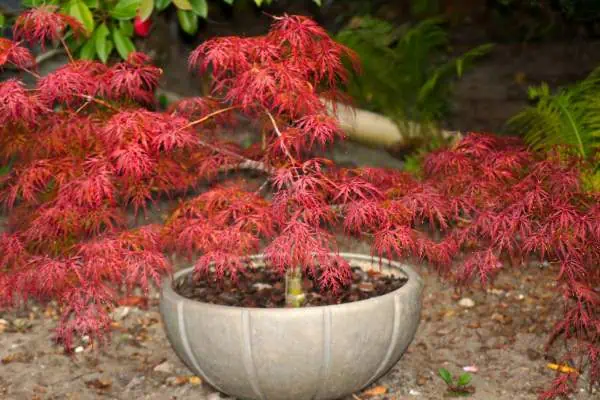
Japanese maples aren’t adapted to full sun. In fact, they prefer part shade. These little trees are more at home in calm, peaceful environments without lots of wind or extreme weather.
A common problem found in American-planted Japanese maples is symptoms of too much sun exposure. An indicator that they’re too hot is curling, dried up leaves. They may be all over the tree or just in the places that are receiving high doses of UV rays.
The solution to too much sun exposure is easy – take the tree out of the sun and place it in the shade. A windowsill facing east or west is a great idea because it only receives sun for part of the day.
4. Cut off dead, dying, and extra branches
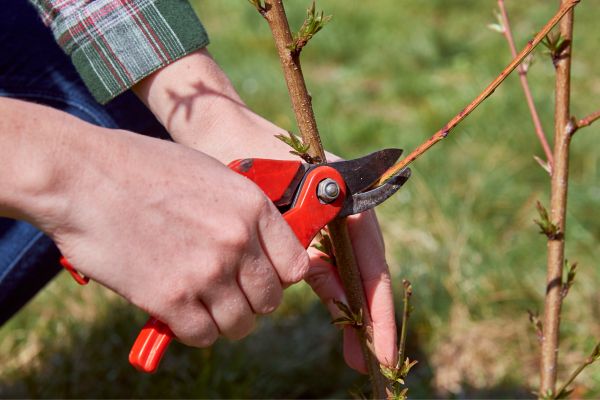
Branches that aren’t contributing to the growth and beauty of the tree should be removed. There’s no need to be extreme, though. You can strike a balance between the extreme pruning common in the bonsai community and just letting your Japanese maple grow wild.
However, it’s important to be very sure that branches are dead before cutting them off. Here’s an example of a Japanese maple that appeared to be dead but new growth started coming in.
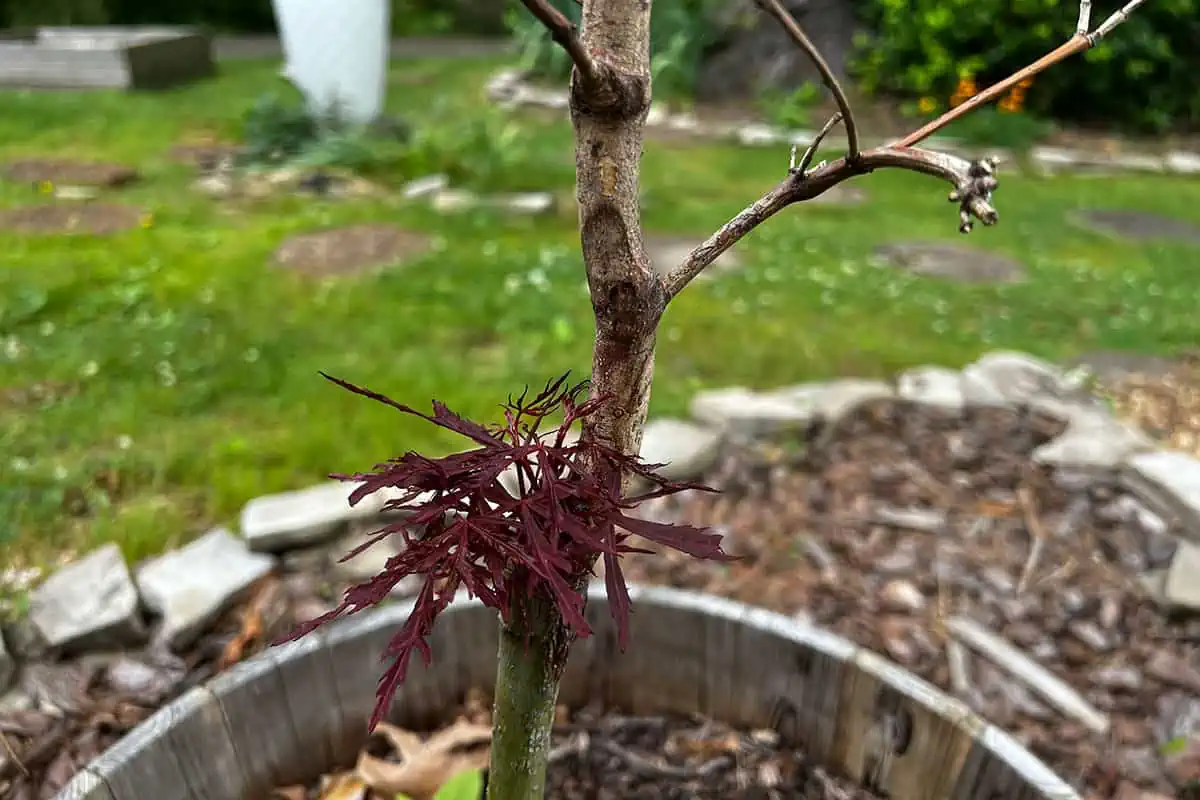
To properly prune a Japanese maple, use sharp shears or whatever cutting implement will make a clean cut. Align the instrument with the branch about ½ inch away from the trunk. Cutting the branch so far away from the trunk will prevent the bark from peeling away at the cut.
5. Fertilize the tree properly
Fertilizer will really help your Japanese maple grow. These trees are already slow growing, so anything helps! The best kind of fertilizer for this tree is granulated pellets.
They are more reliable for long-term use than liquids since they can be bored into the ground once. Every time you water the tree, the fertilizer will leach into the soil.
Be careful when you fertilize your Japanese maple. It shouldn’t be fertilized until a year or two after you plant it.
It’s a good idea to let the root system develop first before making nutrients easy to get to. The best time to put fertilizer down is in spring, and the worst is during the fall.
What environments can a Japanese maple tree handle?
Despite their delicate appearance, Japanese maples are relatively hardy trees. They can survive in USDA Zones 5 through 8. Unfortunately, they don’t make it in zones that are much colder or warmer.
Significant difficulty for some gardeners comes with this tree’s requirement for well-draining soil and a medium amount of sun. Clay, which holds water in a pan-like shape so that it doesn’t percolate down into the soil, is a big ‘no’ for the Japanese maple. It prefers well-draining soil with sand in it.
If they are planted in areas with regular winter snowfall, Japanese maples will need some extra TLC in the cold months. They can be chapped and scorched by the wind and the sun. If you can move the container with the tree in it, do! Even if the new location is still outside, it will be better if it’s in partial shade and nearby a building to block the wind.
Conclusion
Japanese Maples are a great option for your yard or home interior. It doesn’t matter if you plant the tree in small pots and prune them to be tiny tabletop ornaments, or let them grow several feet tall in planters by your door. They are fantastic additions to any home or backyard.
